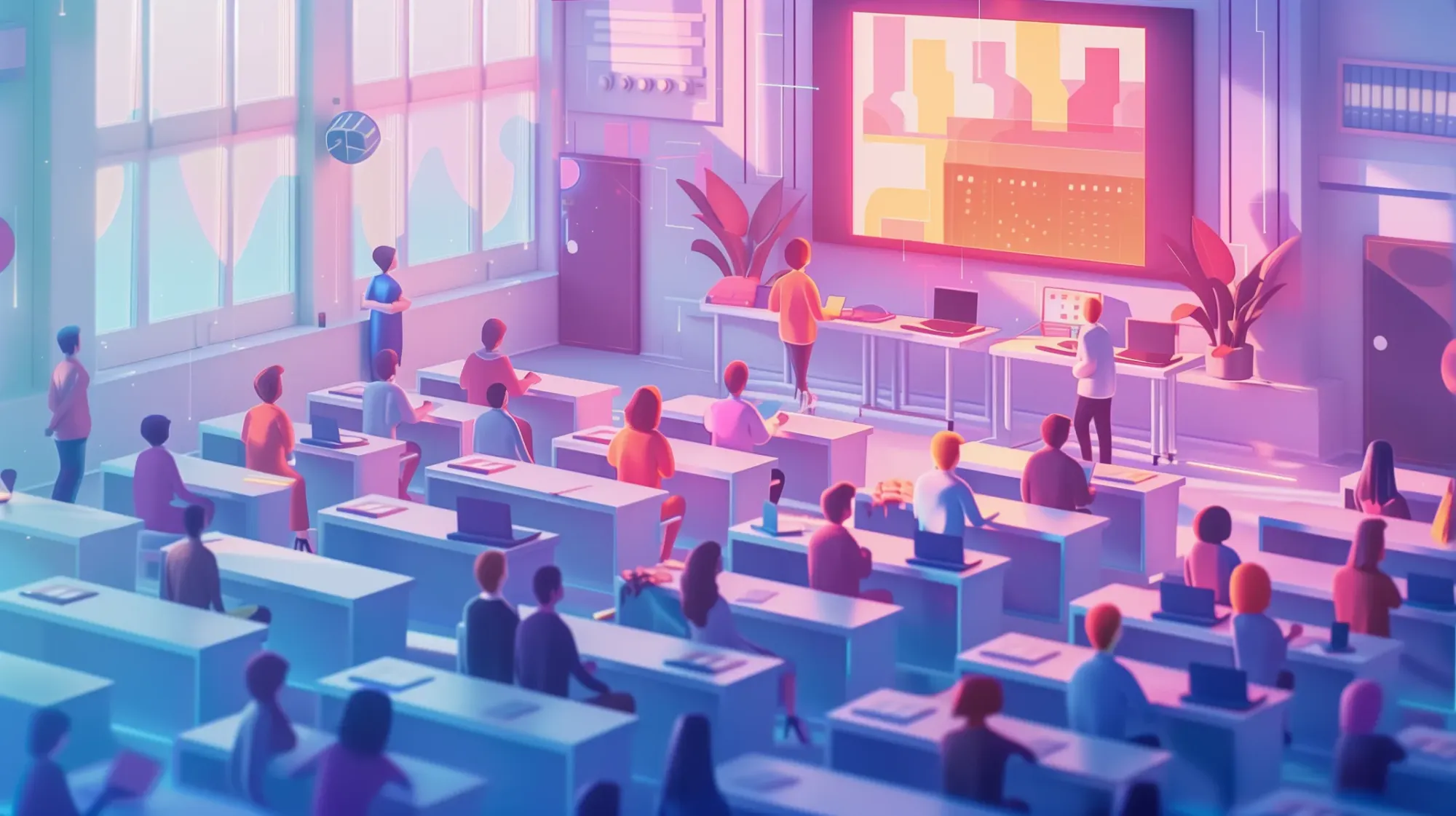Augmenting Urban Landscapes: How AR and Generative AI Will Change Your City
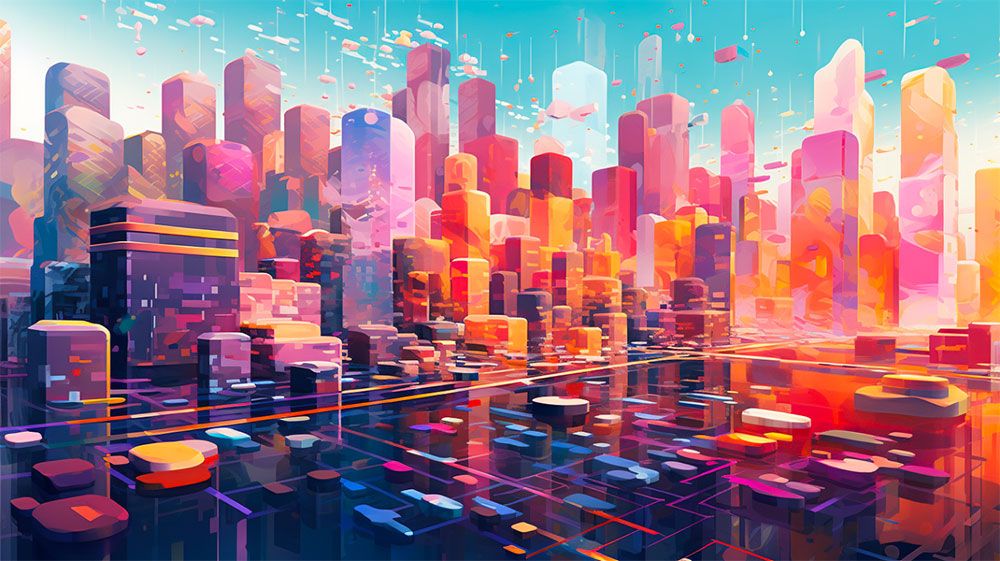
Imagine walking down a bustling urban street, surrounded by the rhythmic symphony of honking cars and murmuring conversations. The buildings tower above you, their facades displaying a tapestry of advertisements and storefronts. But as you lift your gaze from the pavement, a magical transformation unfolds before your eyes.
The ordinary becomes extraordinary as vivid digital images dance and twirl around the cityscape. A larger-than-life virtual artwork adorns the side of a building, blending seamlessly with its physical counterpart. Historical figures come alive, sharing their tales of triumph and tragedy through interactive holograms.
This is not a scene from a futuristic movie; it is the wondrous realm of Augmented Reality (AR) that is reshaping the very fabric of our urban streets. Step into this immersive journey as we explore the profound ways in which AR is transforming the urban landscape, weaving together technology and reality in a mesmerising dance of innovation.
In the midst of rapidly advancing technology, a groundbreaking revolution is quietly taking place on the streets of our cities. AR, once confined to the realms of science fiction, has seamlessly woven itself into the fabric of our urban landscapes, transforming the way we interact with and perceive our surroundings. From enhancing everyday objects to creating immersive experiences, AR has opened up endless possibilities for transforming our perception of reality. In this article, we'll explore how AR reshapes urban landscapes, its applications in various industries, and its exciting future.
The Importance of AR in Transforming the Urban Landscape
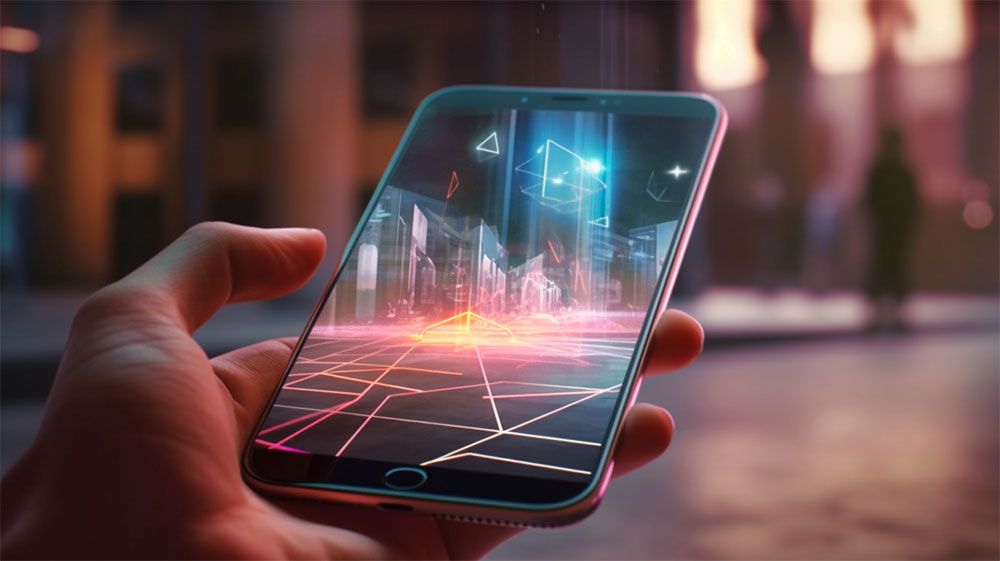
The urban landscape is undergoing a remarkable transformation, propelled by the captivating force of AR. This mesmerising technology has transcended boundaries and ushered in a new era of experiencing and interacting with cities, leaving an indelible mark on our collective consciousness. Let us delve into the captivating reasons why AR assumes an unparalleled importance in shaping the urban environment.
First and foremost, AR shatters barriers and paves the way for improved accessibility within cities. With the seamless superimposing of digital information onto the physical world, augmented reality empowers a wider spectrum of individuals to navigate urban spaces with newfound ease and confidence. The visually impaired can rely on AR's auditory cues to navigate the labyrinthine streets, while tourists can effortlessly explore the city's hidden gems with AR-enhanced navigation systems. AR opens up a world of possibilities for everyone, fostering inclusivity within the urban landscape.
Amongst the most enchanting aspects of AR is the ability to breathe life into the cultural tapestry and historical fabric of cities. With skillfully overlaying virtual elements onto tangible landmarks, AR invites visitors to embark on enchanting journeys through time. Imagine standing before an ancient monument and, with the gentle swipe of your smartphone screen, witnessing the grandeur of its bygone era unfold before your very eyes. AR transforms cultural experiences, evoking a profound sense of connection and reverence for the city's rich heritage.
In the realm of urban design and planning, AR stands as a revolutionary force, transcending the constraints of traditional blueprints and models. Through visualising proposed developments within the context of the existing urban landscape, AR empowers stakeholders and communities to actively participate in shaping the future of their cities.
With a shared understanding of the vision, they can contribute invaluable insights and suggestions, leading to urban development that is not only aesthetically pleasing but also sustainable and harmonious with the needs of the inhabitants.
Moreover, AR is a powerful tool for fostering community engagement within urban spaces. It acts as a catalyst, igniting residents' collective spirit and encouraging them to actively participate in the co-creation of their neighbourhoods. Through immersive AR-based platforms, citizens can exchange ideas, offer feedback, and collaborate on various urban initiatives. This collaborative spirit instils a sense of ownership and collective responsibility, nurturing vibrant communities that thrive on the passion and dedication of their inhabitants.
The integration of AR into the urban landscape enriches society's fabric and drives economic growth and innovation. Businesses armed with the potential of AR can deliver targeted advertising campaigns and personalised promotions, captivating their customers in entirely novel ways. Enhanced customer experiences, infused with the magic of AR, create lasting impressions that foster brand loyalty and propel economic prosperity. Furthermore, the development of AR applications and infrastructure spurs job creation and entrepreneurial ventures, injecting vitality into the urban economy.
Revolutionary Urban AR Tools: Enhancing the City Experience
In recent years, innovative urban AR tools have opened up exciting possibilities for transforming our urban landscapes. The Geospatial Creator by Google and Peridot by Niantic are two notable examples of these cutting-edge tools. These tools stand out due to their unique features, capabilities, and potential impact on urban experiences. Here are some of their most groundbreaking characteristics.
Geospatial Creator by Google
Google has combined the power of ARCore and Google Maps to introduce the Geospatial Creator, a tool that revolutionises how users can design and share world-anchored content. The Geospatial Creator allows users to create immersive AR experiences directly linked to real-world locations. The tool offers photorealistic 3D tiles, precise geospatial anchors, terrain data, and rooftop information. With these features, users can overlay virtual objects, information, or interactive elements on specific areas in the urban environment. This tool enables the creation of immersive, location-based experiences that seamlessly blend virtual and physical realities.
Peridot by Niantic
Niantic, the company behind the popular mobile game Pokémon GO, has made significant strides in AR with the launch of Peridot. Peridot represents an immersive AR experience that pushes the boundaries of interactive entertainment. With the help of computer vision, machine learning, and advanced mapping technologies, Peridot enables users to interact with virtual objects and characters in real-world urban environments. This tool enhances the urban experience by overlaying digital elements, such as creatures, characters, or interactive features, onto the physical surroundings. Users can engage with these virtual elements through their mobile devices, creating a seamless blend of the virtual and real worlds.
Gen-1 by Runway
Runway's Gen-1 platform deserves recognition for its focus on AR and the exciting possibilities it brings. Gen-1 empowers users to enhance existing videos by applying generative AI transformations based on text, images, or video inputs. This platform allows for the conversion of ordinary videos into captivating visual experiences by incorporating dynamic elements derived from various sources. While not directly focused on urban environments, the technology opens up opportunities for incorporating AR into urban design, marketing, or informational videos, providing a new level of engagement and visual storytelling.
These revolutionary AR tools offer unique capabilities that can significantly enhance the urban experience. From location-based AR experiences with the Geospatial Creator to immersive entertainment with Peridot and dynamic video transformations with Gen-1, these tools showcase the transformative potential of AR in urban environments. As AR technology continues to advance, we can expect even more innovative tools and applications that redefine how we interact with and perceive our cities.
Harnessing the Power of Generative AI
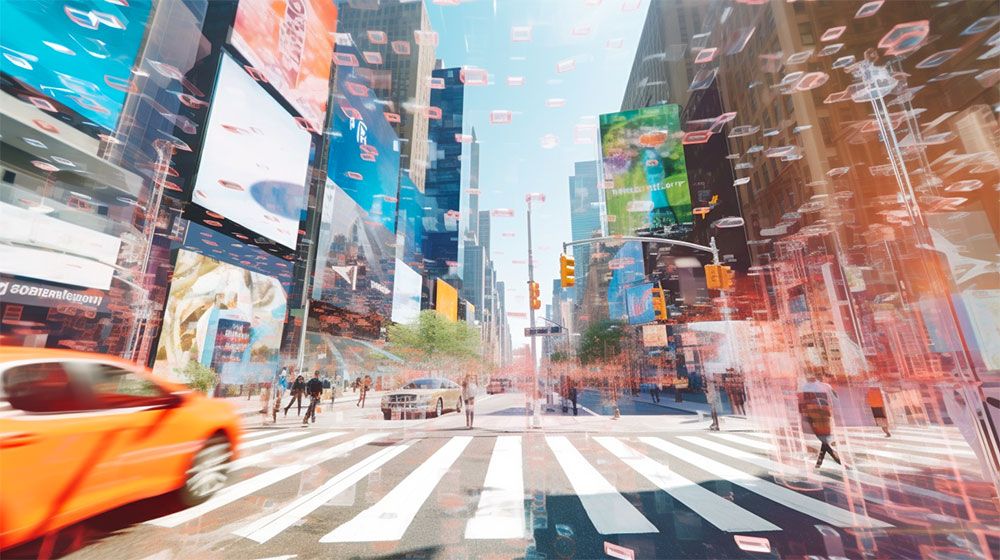
AR has already demonstrated its immense potential in reshaping the urban landscape, but the future holds even more exciting possibilities with the integration of generative artificial intelligence. Generative AI, a branch of AI that focuses on creating synthetic content, presents a groundbreaking opportunity for the rapid and dynamic creation of AR experiences. As generative AI continues to advance, we can envision a future where AR content is generated in real-time based on your personal preferences, unlocking unprecedented levels of creativity, interactivity, and personalisation.
Generative AI has the capacity to revolutionise the way we create and experience AR in urban environments. With the ability to generate content autonomously, AI algorithms can generate virtual overlays, interactive elements, and immersive environments that seamlessly blend with the physical world. This technology has the potential to transform how we interact with cities, enabling real-time AR experiences that adapt and respond to the needs and preferences of individuals and communities.
Imagine walking down a city street and witnessing AR content materialise before your eyes, responding to your surroundings and providing personalised information and experiences. Generative AI can fuel this vision by dynamically generating AR content based on real-time data inputs, such as location, user preferences, and environmental factors. Whether it's highlighting points of interest, delivering personalised recommendations, or creating immersive storytelling experiences, generative AI-powered AR holds the key to unlocking a new dimension of urban exploration and engagement.
Also, generative AI can facilitate the rapid creation and deployment of AR content in urban environments. Traditionally, creating AR experiences required significant time, resources, and specialised skills. However, with generative AI, the process becomes more streamlined and accessible. If we leverage AI algorithms that can generate AR content autonomously, the barrier to entry for creating AR experiences is significantly lowered. This opens the door for a wider range of creators and developers to contribute to the ever-growing AR landscape, fostering innovation, diversity, and inclusivity.
The impact of AR combined with generative AI on the urban landscape is nothing short of extraordinary. From enhancing accessibility and cultural experiences to revolutionising urban design, fostering community engagement, and driving economic growth, AR's transformative power is undeniable. As we embrace this captivating technology, our cities will flourish as dynamic tapestries, weaving together the aspirations and dreams of the people who call them home.
Transforming Urban Environments: The Power of AR Applications
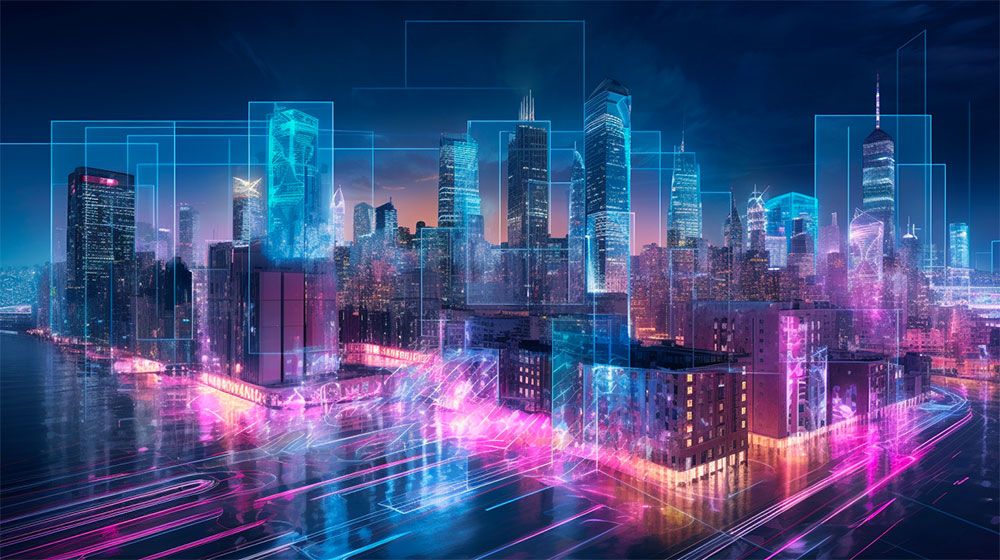
The power of AR applications in reshaping urban environments has reached new heights, with the technology now making it incredibly simple to create AR experiences. The advancements achieved in AR development have brought forth a wave of accessibility, empowering individuals and communities to effortlessly harness the potential of this transformative technology.
Gone are the days when creating AR content required extensive technical expertise or specialised skills. Today, user-friendly AR platforms and intuitive tools have emerged, enabling anyone with a creative vision to bring their ideas to life. With simplified interfaces, drag-and-drop functionality, and pre-built templates, the process of creating AR experiences has become remarkably straightforward.
Let's delve deeper into some key AR applications that are reshaping urban landscapes:
Navigation and Wayfinding
AR-powered navigation apps are revolutionising how pedestrians and drivers navigate urban streets. These applications use augmented reality to deliver real-time, clear guidance by superimposing digital information over the actual world. Users can receive turn-by-turn directions, discover nearby points of interest, and access enhanced mapping features. Real-time information overlays, such as public transportation schedules, live traffic updates, and points of interest, make navigating cities more efficient, seamless and informed.
Virtual Tourist Guides
AR-based apps are revolutionising the tourism experience by offering interactive and immersive virtual guides. These apps provide visitors with an enriched exploration of cities by overlaying historical and cultural information on landmarks and attractions. Users can access multimedia content, historical facts, and engaging storytelling as they explore the city. With AR, tourists can witness the transformation of ancient ruins, historical events, and cultural celebrations, bringing the past to life in an unprecedented way.
Real Estate and Architecture
AR is disrupting the real estate and architectural industries, revolutionising the way properties are showcased and designed. AR visualisation tools enable potential buyers to virtually walk through properties, envision different interior designs, and experience properties in a more immersive and realistic manner. For architects and urban planners, AR offers the ability to overlay augmented blueprints and 3D models onto physical locations. This empowers professionals to visualise proposed developments, assess their impact, and make more informed decisions, ultimately leading to more efficient and sustainable urban designs.
Integrating AR into navigation, tourism, real estate, and architecture is reshaping urban environments and improving how we interact with cities. As AR technology continues to advance, we can expect even more innovative applications to emerge, creating smarter, more connected, and more engaging urban spaces. The possibilities for AR in urban environments are vast, promising to revolutionise how we experience and shape our cities.
Urban Artistry
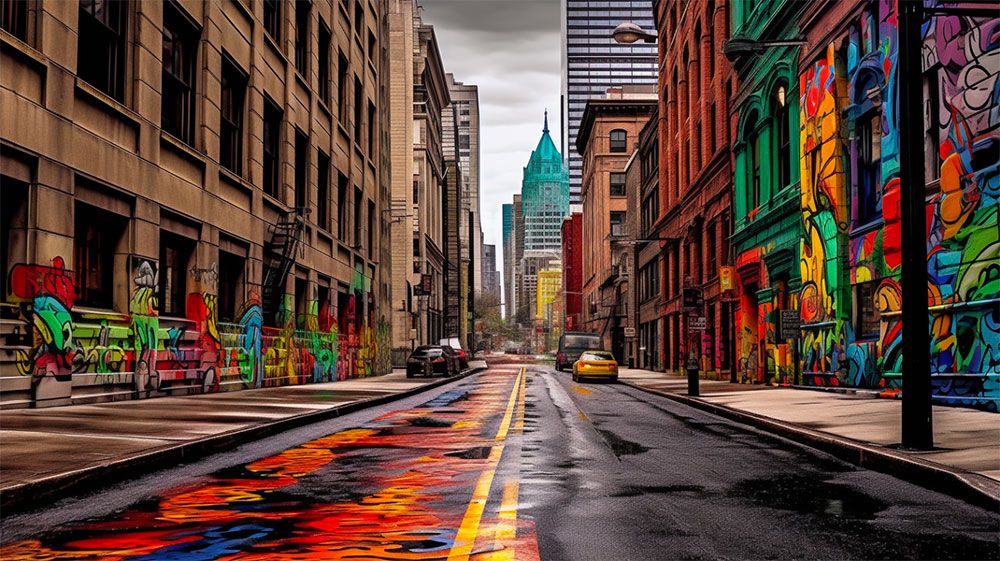
Art has the power to transform urban environments, and when combined with Augmented Reality, it can unlock a new realm of creative expression and engagement. AR enables artists to overlay digital artworks onto physical spaces, effectively blurring the boundaries between the virtual and real worlds. This fusion of art and technology can breathe new life into urban landscapes, turning everyday structures, streets, and public spaces into immersive canvases for artistic exploration. AR art installations can evoke emotions, challenge perceptions, and provoke thought, creating interactive and dynamic experiences that captivate and engage both residents and visitors.
For instance, Tripadvisor harnesses the power of street art and AR to promote San Diego, turning the city into a vibrant canvas where visitors can explore its rich cultural heritage through an immersive digital experience. When harnessing the creative potential of AR, artists can reimagine urban environments, infusing them with colour, movement, and narratives that reflect the diverse cultural fabric of a city, ultimately transforming public spaces into living, evolving galleries of digital expression.
AR Applications for Enhancing Public Safety and Infrastructure
Augmented Reality is transforming how we navigate and experience cities and playing a vital role in enhancing public safety and infrastructure management. Here are two key areas where AR is making a significant impact:
Traffic Management and Road Safety
AR is revolutionising traffic management and road safety by providing real-time information and assistance to both drivers and pedestrians. AR-powered applications can optimise traffic signals, reducing congestion and improving overall traffic flow. With AR overlays, drivers can receive real-time hazard warnings, such as construction zones, accidents, or road closures, ensuring safer navigation. Pedestrians can also benefit from AR-powered crosswalk assistance, which can display virtual guides, countdown timers, and alerts to enhance their safety while crossing busy streets.
Maintenance and Repairs
AR-assisted maintenance and repairs are transforming the management of urban infrastructure and utilities. Maintenance workers can utilise AR technology to access real-time information and instructions for repairs, reducing downtime and improving efficiency. AR overlays can provide step-by-step visual guidance, highlighting components that require attention and displaying relevant information for troubleshooting. Also, remote assistance using AR enables experts to guide field technicians through repairs, minimising travel time and costs.
The integration of AR in public safety and infrastructure management brings numerous benefits, including improved traffic flow, enhanced road safety, efficient maintenance, and cost savings. As AR technology continues to advance, we can expect even more innovative applications, such as augmented reality glasses or smart city platforms, that integrate seamlessly with urban infrastructure for real-time monitoring and management.
The future potential of AR for enhancing public safety and infrastructure is immense. Cities can become smarter, more effective, and safer places to live by utilising AR's capabilities. Embracing AR in urban environments opens up a world of possibilities for creating sustainable, resilient, and technology-driven cities.
AR Revolutionises Retail and Advertising: Enhancing Experiences and Engagement
Augmented Reality is revolutionising the retail and advertising sectors by introducing innovative ways to enhance customer experiences and boost engagement.
Location-Based AR Advertising
AR is reshaping traditional advertising methods through location-based targeting. Brands can deliver targeted AR advertisements that produce individualised and engaging experiences by utilising user location and preferences. For example, as users pass by a store, AR overlays can showcase virtual signage or promotional offers, enticing them to visit the physical location and explore specific products or exclusive discounts. This dynamic and interactive form of advertising captures attention, increases brand visibility, and drives foot traffic to brick-and-mortar stores.
The integration of AR in retail and advertising brings a multitude of advantages, including heightened customer engagement, improved conversion rates, and enhanced brand experiences. Retailers and advertisers may develop fascinating campaigns that have a lasting impact on consumers by utilising AR technology.
Looking ahead, the future of AR in retail and advertising holds immense potential. As AR technology continues to advance, we can anticipate seamless integration of AR experiences into e-commerce platforms, enabling virtual product try-ons and realistic visualisations in real-world settings. Also, as wearable AR technology advances, the lines between the physical and virtual worlds will become less distinct, opening up new opportunities for immersive and personalised brand interactions.
AR is reshaping the retail and advertising landscapes, offering exciting avenues to engage customers, drive sales, and create lasting brand impressions. Retailers and advertisers can maintain their leadership in innovation by embracing AR and delivering memorable, immersive experiences that appeal to today's tech-savvy consumers.
Overcoming Challenges and Embracing the Future of AR
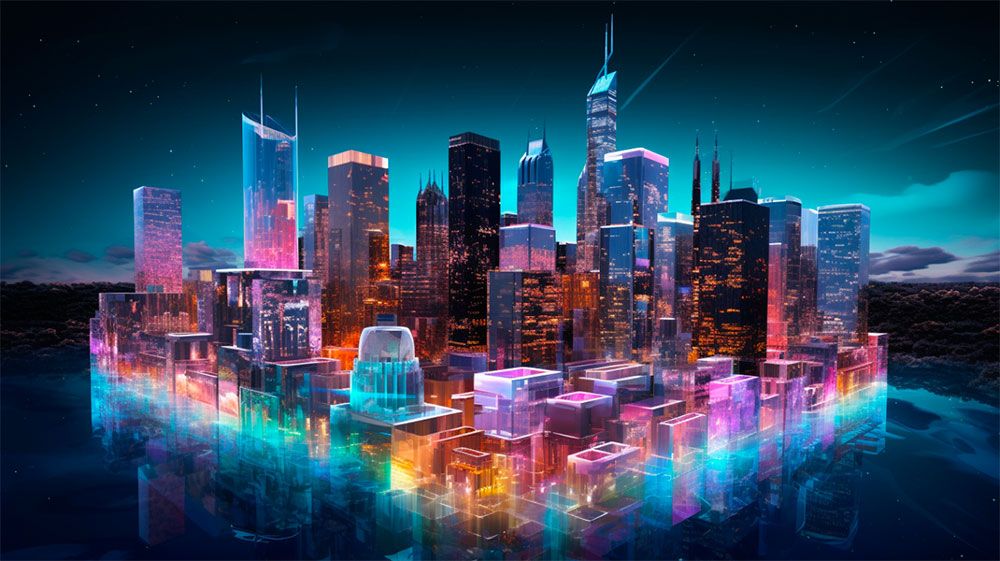
As we venture further into the realm of AR, we encounter both technical hurdles and ethical considerations that shape the landscape of possibilities. The path towards a fully realised AR future is not without its challenges, but as visionaries and innovators, we stand poised to overcome these obstacles and unlock the true potential of this transformative technology. Let’s delve into the uncharted territories, exploring the challenges we face and the thrilling possibilities that lie ahead.
Among the greatest challenges of AR are the technical limitations and infrastructure requirements of AR. While AR has already made great strides in terms of accessibility and functionality, there are still technological barriers to overcome. The seamless integration of virtual and physical worlds demands robust processing power, high-speed connectivity, and precise tracking capabilities. From powerful hardware devices to robust network infrastructure, creating an AR ecosystem that can deliver seamless and immersive experiences to a wide range of users remains a complex task. However, as technology advances and investments in infrastructure continue to grow, we are inching ever closer to a future where AR seamlessly integrates into our everyday lives.
Alongside the technical challenges, we must also grapple with the ethical considerations and privacy implications of AR. As AR blurs the line between the real and virtual, questions arise regarding data security, personal privacy, and consent. How can we strike a delicate balance between providing personalised experiences and respecting individuals' rights to privacy? How do we ensure that user data is handled responsibly and transparently? These are pressing concerns that demand careful thought and proactive measures to safeguard the trust and confidence of users. Embracing privacy by design and establishing robust ethical frameworks will be instrumental in building an AR ecosystem that puts user well-being and autonomy at its core.
Addressing the Issue of Hyper-Reality Fusion in Urban Environments
The integration of physical and virtual realities presents a complex set of challenges. One fundamental issue is the need for precise and reliable spatial mapping. Accurately aligning virtual content with the physical environment requires robust mapping techniques that can understand the spatial context and geometry of urban spaces. Also, seamless tracking of users' movements and perspectives is crucial to maintaining a consistent and realistic AR experience. Achieving these capabilities at scale across diverse urban environments poses a significant technical hurdle.
There are also some issues in realising the Hyper-Reality vision in the cities as the potential saturation of media in the city. While AR has the potential to enrich urban experiences, an overabundance of digital content could lead to information overload and a cluttered environment. Striking the right balance between providing valuable and relevant AR information and preserving the natural aesthetics of urban spaces is crucial. Design considerations must focus on creating intuitive user interfaces and intuitive interactions that enhance rather than overwhelm the urban landscape, ensuring that AR content enhances the user experience without detracting from the physical world.
Despite the challenges, the future of AR brims with tantalising possibilities. Advancements in hardware, such as lightweight and immersive AR glasses, promise a more seamless and unobtrusive integration of digital overlays into our physical environment. Imagine a world where we effortlessly access information and experiences through sleek, stylish eyewear instead of peering into our handheld devices. Aside from that, the convergence of AR with other emerging technologies like artificial intelligence and the Internet of Things (IoT) opens up boundless avenues for innovation. From personalised and context-aware experiences to smart environments that respond intuitively to our needs, the future of AR holds the potential to reshape our world in ways we have yet to fully fathom.
As we forge ahead, it is crucial to foster collaboration between industry leaders, policymakers, and the wider community. Through open dialogue and shared vision, we can collectively address the challenges and shape a future where AR realises its full potential. Investing in research and development, nurturing a culture of responsible innovation, and prioritising user-centric design can pave the way for an AR landscape that enriches our lives, empowers businesses, and cultivates a sense of wonder and possibility.
In this journey through uncharted frontiers, let us embrace the challenges as opportunities for growth and let our collective imagination guide us towards a future where augmented reality seamlessly integrates into the fabric of our existence. The possibilities are limitless, and together, we can embark on a remarkable voyage that will redefine the way we experience and interact with the world around us.
Final Thoughts
The impact of augmented reality on the retail and advertising sectors is nothing short of transformative. As we stand at the precipice of an AR revolution, we must address the technical challenges and ethical considerations that lie ahead. If we invest in technological advancements, foster privacy and ethical practices, and embrace collaboration, we can unlock the boundless potential of AR to enhance customer experiences and reshape our urban landscape.
The journey toward an AR-driven future is an ongoing endeavour, but the rewards are limitless. From immersive product interactions to captivating advertising campaigns, AR can transport us to new realms of possibility. As we embrace this extraordinary technology with responsible innovation and a shared vision, we can shape a tomorrow where the lines between the virtual and physical blur, opening doors to a world where imagination truly knows no bounds.
Images: Midjourney



